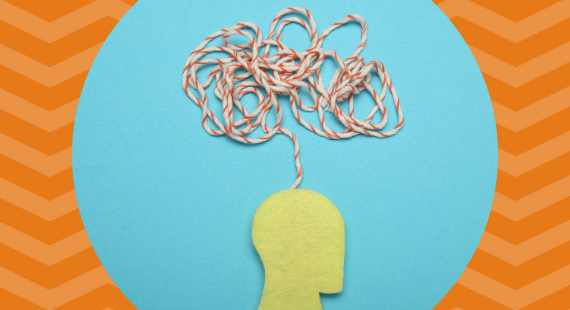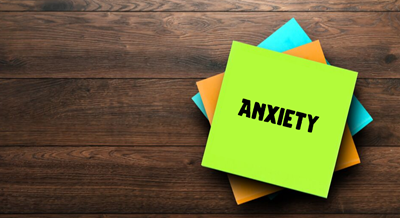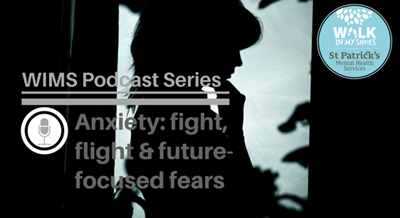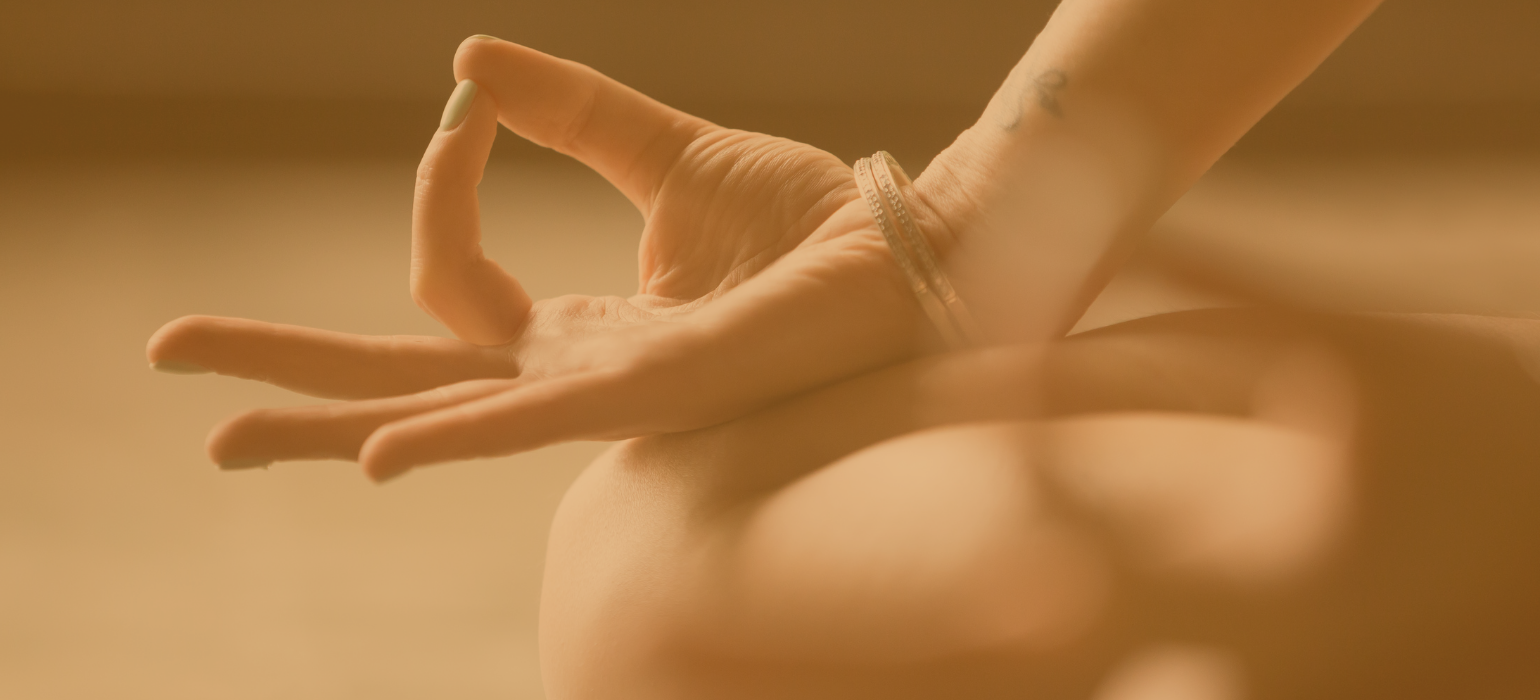
Everyone can feel anxious, stressed, worried or fearful at some point in their life. What does it really mean to have anxiety and how can you manage it?
Dr Una Dennison of St Patrick's Mental Health Services explores.
What does it really mean to have anxiety?
You may have heard the term “anxiety” used quite a lot lately, be it in the news, in school or among your friends and peers. What are some of the most effective ways you can manage anxiety if you do experience it?
Everyone can feel anxious, stressed, worried or fearful at some point in their life. Often, anxiety is a natural reaction to some of life’s challenges, including sitting an exam, changing school, or starting a job, and feelings of worry or anxiousness are perfectly normal.
Sometimes, you may be feeling more anxious than usual, or already existing anxiety might be raised. It is helpful to know whether the feelings you’re experiencing are a reaction to the particular stressor, or if they might require further attention, including professional support.
This blog aims to highlight the differences between normal anxiety, as reactions to life’s stressors, and anxiety disorders.
What is anxiety?
Anxiety is used to describe instances where people find it difficult to control their worries. Anxiety is an uneasy feeling, such as worry, fear or restlessness, that is more persistent, long-term and not necessarily associated with a stressful event. When a person has an anxiety disorder, it can be mild or severe and, often, it can begin to take a toll on a person’s day-to-day life.
Anxiety can be a vicious cycle, whereby something happens to trigger a thought and that thought then leads to physical symptoms. These then spark heightened emotions which spur a change in behaviour. This change in behaviour can then lead to more situations that trigger thoughts, and the cycle begins all over again.
Often, recognising the cycle of anxiety can be helpful in identifying your feelings and pinpointing how to work through them.
An example of a cycle of anxiety in action might be:
- Situation (trigger): A friend was late to meet you and you can’t contact them by phone
- Thoughts: What if they were in an accident? What if I did something to annoy them and they aren’t coming now? What if they don’t want to be my friend?
- Emotions: Scared, worried, anxious, apprehensive, uneasy
- Physical sensations: Heart racing, sweatiness, shakiness, nausea
- Behaviours: Making repeated phone calls; overthinking all the reasons they might be late; checking news channels repeatedly to see if there was an accident; apologising in case you did something wrong.
What types of anxiety are there?
There are lots of different symptoms of anxiety and people can experience anxiety in different ways.
Generalised anxiety disorder
Generalised anxiety disorder is recognised as chronic and excessive worrying about a number of different things, including schoolwork, social interactions, family, health or safety, and world events.
Some signs of general anxiety disorder could include:
- having trouble controlling your worries
- being perfectionist
- seeking reassurance often
- struggling with distress internally and in a way that friends and family might not notice.
Symptoms are usually present most days for at least several weeks and include constant worry or apprehension, muscular tension, extreme tiredness, poor concentration, irritability, and poor sleep or disturbed sleep.
Some tips for managing general anxiety disorder include the below.
- Talking to someone you trust
- Remembering to have fun and laugh: you can find humour anywhere – books, movies, online. Taking a moment to laugh reminds you that your anxiety does not control you
- Practice mindfulness: if you’re not sure what this involves, apps like Headspace can be very helpful. Mindfulness colouring is also proven to reduce anxiety. You can download free Walk in My Shoes resources, like meditation exercises or mindfulness colouring sheets.
- Learn your triggers: pay attention to situations that trigger your anxiety. While you might not be able to avoid them, being aware of what might cause anxiety can help you take proactive steps to manage it.
Social phobia
People who experience social phobia feel scared or uncomfortable in one or more social settings or performance situations. The discomfort is often as a result of being afraid of doing something embarrassing.
Signs of social phobia may include difficulties with:
- eating in public
- answering questions
- reading aloud
- initiating conversations
- talking with unfamiliar people
- attending parties or social events.
Some tips for managing social phobia include:
- Joining a group with similar interests: while it might seem scary to join a group when you feel anxious in social situations, a group of like-minded people with similar interests makes social interaction a little easier as you know you already share common goals, interests or passions with the others
- Not avoiding social situations: many people with social phobia avoid certain situations for fear of their anxiety, but, the more you avoid situations, the worse anxieties will become. While it may feel uncomfortable at first, the more you participate in social settings, the less constraining your anxiety will become
- Avoiding drinking or taking drugs as a way to cope with social situations, as these are both proven to actually worsen anxiety.
Agoraphobia
Agoraphobia means a person might have a series of overlapping phobias centred around fears of leaving home to go to places where there might not be an easy escape to a ‘safe’ place, or where help might not be available if things went wrong.
Agoraphobia is a complicated mental health difficulty and someone experiencing it may be scared by open spaces, travelling on public transport, visiting a shopping centre or just leaving home in general. They are likely to avoid putting themselves in these situations, so may only leave the house with a friend or family member.
If someone who experiences agoraphobia finds themselves in a worrying situation or a stressful scenario, it is common for them to experience the symptoms of a panic attack, such as a racing heart, fast breathing, or feeling hot and nauseous.
Tips for managing agoraphobia include:
- Practicing relaxation techniques: they can be easily learned from home and significantly ease tension in the mind. See our #MindYourSelfie resources or self-care talks to try free mindfulness and relaxation exercises that you can easily do at home
- Listening to music: music is proven to release stress and tension, so bringing music with you while you go out and listening to it if you feel anxiety can be very calming
- Bringing a book or magazine: if you’re focused on reading about something or someone else, you won’t be so conscious of those around you or on the look-out for things that could go wrong.
Panic disorder
Panic disorder is recognisable as a series of frequent attacks of severe anxiety or panic, which are not necessarily associated with a particular set of circumstances or situations, so are unpredictable.
Panic is the most severe form of anxiety. Symptoms can vary from person to person, but can include:
- a racing heart (palpitations)
- chest pain
- a feeling like you’re choking
- dizziness
- dry mouth
- hot flushes
- shaking or trembling
- feeling like you’re not connected to your body.
Fears of losing control, dying or like you’re “going mad” are also a common side-effect of panic disorder or panic attacks.
Most panic attacks can last between five to 20 minutes.
Tips for managing panic disorder include:
- Remembering that panic attacks are not dangerous and will not cause you any physical harm
- Limiting caffeine, which is a nervous system stimulant; opt for chamomile tea instead
- Exercising: studies show that just 20 minutes of exercise can reduce anxiety
- Learning breathing exercises to help calm you down if you’re having a panic attack: for example, breathe in slowly and deeply while counting to five, and then exhale slowly, counting to five. You can keep doing this till you feel your heart rate slowing back down to normal or until you feel calmer.
How is anxiety treated?
Anxiety is very treatable. Treatment for anxiety can and does often include a combination of self-help techniques at home, as well as different evidence-based treatments from trained mental health professionals. The most common treatments for anxiety delivered by mental health professionals include the below.
Cognitive behavioural therapy
Cognitive behavioural therapy (CBT) helps you to understand how your thoughts and actions can affect the way you feel. CBT is a talking therapy which has a huge evidence base.
When used to treat anxiety disorders, CBT has been shown to improve overall quality of life. It helps you to stop the negative anxiety cycle, along with its thoughts, emotions and behaviours, by teaching you how to notice what is making you feel anxious and how to manage these factors.
CBT has several key components, including education, problem-solving, relaxation training, breathing and exercise, and restructuring how you think by challenging anxiety-provoking thoughts and negative self-talk.
Medicine
Medicine for anxiety, while used alongside CBT, can be very effective in the treatment of anxiety disorders.
Selective serotonin reuptake inhibitors (SSRIs) are the most commonly used medicine in the treatment of anxiety disorders in adolescents. Like many medications, SSRIs can have some side-effects; however, when used alongside a therapy such as CBT, they can be effective in treating anxiety disorders.
I would like to seek help for my anxiety: what do I do first?
If you’re worried about your anxiety, the following simple steps can pave the way to a more mentally healthy life, where you can manage your anxiety.
Talk to your GP
Your GP will know your entire health history, both physical and mental, so this is the first person you should talk to. Together with your GP, you can decide on the right course of action for you
Get support and information
Confide in a friend or family member. You can also see our information about different mental health conditions here and try out our free downloadable resources to promote mental health education and awareness. We also share information on other sources of information or support groups on our Getting Help page.
Seek further help
If you decide that you could benefit from the help of a mental health service, your GP can signpost you to a service that will suit your needs.



